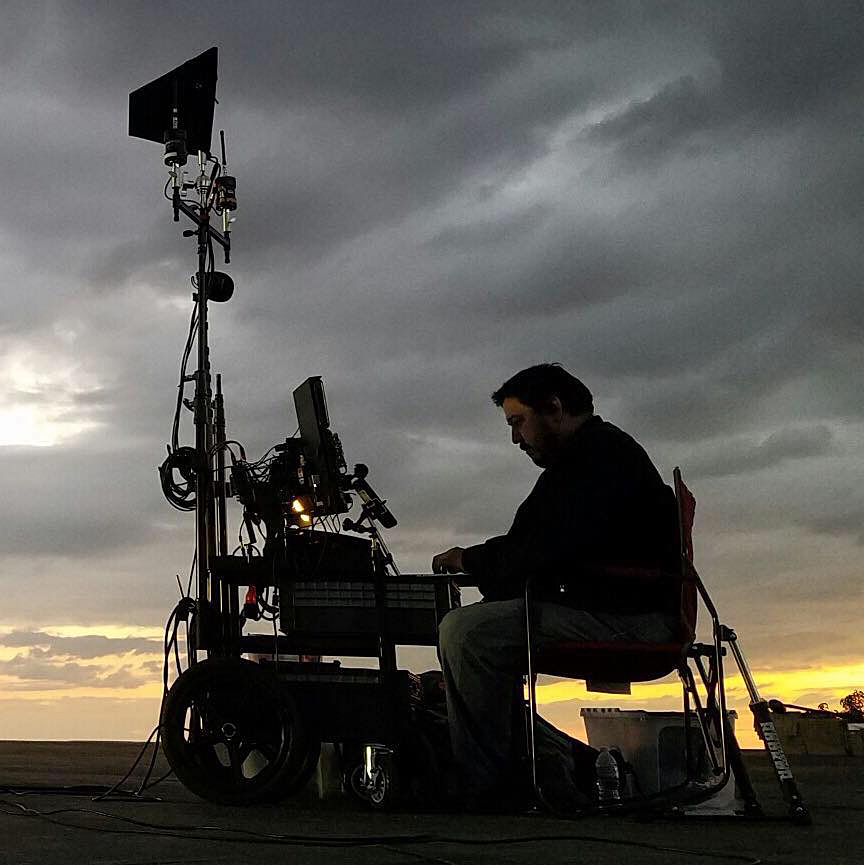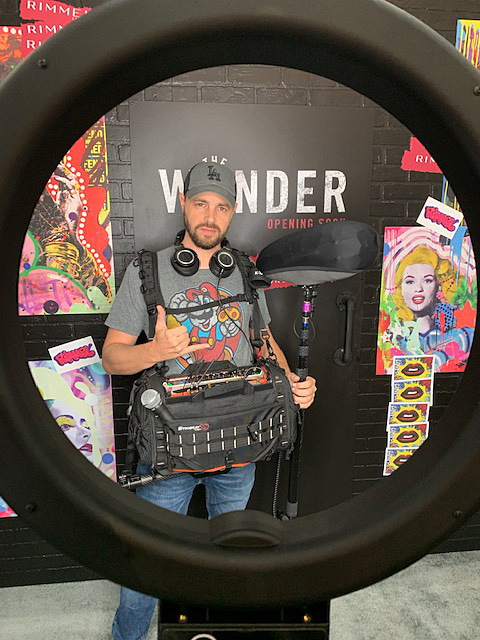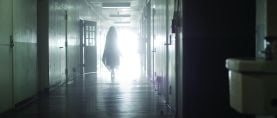
Sound Track
Discussing the key on-set collaboration between the sound department and the camera crew.
Photos courtesy of the filmmakers. Photo of Kevin Bellante by J. J. Kelley.

Discussion participant Chris Howland is a member of the Cinema Audio Society, whose work can be heard in Once Upon a Time ... in Hollywood, S.W.A.T., Us and the Star Wars live-action TV series The Mandalorian. Manuel López Cano is known for his work on Princess of the Row, The Resurgence and Artista Obscura, as well as Before the Dawn, a feature I directed. Kevin Bellante is a sound mixer I’ve enjoyed working with twice on docu-reality projects, which are his specialty; his credits include the 2018 Emmy Awards, the VMAs, and the TV series Brewdogs, Rock the Troops, Bridezillas and Lip Sync Battle.
American Cinematographer: What is it that a cinematographer or the camera team can do better to collaborate on set?
Chris Howland: Mostly, it comes down to the sharing of information on a set. We all live and die by the flow of information. That’s how we make our decisions — how we decide what our coverage is going to be, how we are going to attack a certain problem, how to prioritize the elements that are coming up. The more accurate the information we have, the easier it is for us to stay up with everybody. A good camera crew will share that information when they get it, and we try to do the same with them.

Manuel López Cano: Camera decisions can impact sound! Sometimes we have to sacrifice sound for having the best picture because it’s worth it, because it makes a difference and we can ADR/foley later. But other times it’s not that vital for the project, or we have time to fix problems and we should work as a team to make it better. Sometimes we might miss something because the cinematographer decides to grab some B-roll that should have had sound recorded, but they thought it didn’t matter. It often does! It’s not a good thing when the camera department makes the decisions for sound.
I certainly have been guilty of that one. You’re in a rush, you see something and you just grab it.
López Cano: In a recent branded documentary, the DP/cam-op was grabbing a lot of B-roll without telling me. He was just saying, ‘this is MOS,’ and we lost a couple of very cool moments — which the director loved! — with people who started talking about their lives. I was literally running behind the DP, ‘just in case,’ and rolling everything. But it shouldn’t be like this. We should have had that conversation at the beginning, to decide between the both of us what is important and what is not for the doc.
I would say that is true of every department. Communication is, of course, always the key to any good, smooth production.
Howland: I always have a better shoot when I can connect with the DP in the preproduction process, and I can actually be part of reading the script and figuring out what the pillars of this story are going to be. I can get an idea of which setups are more labor intensive, and which setups have more creative decisions going into them that we really want to concentrate on and execute. Most of the time, however, production sound will go into it almost blind, especially in the indie world. We’re hired a week or two in advance. We’re lucky to be invited on the tech scout; it’s always a mistake when we aren’t — sound should always be there. People assume that we’re just there to say, ‘This location is bad!’ but that’s not true at all. We’re looking at the same things camera is looking at: the logistics. How do I get my gear in here? Where will my crew be? What problems will we face on this location? Then you have to look at how the location plays into the overall story and the broader scheme of the film. Sometimes a noisy location isn’t bad for the story; sometimes it actually enhances it. I always have a better shoot when I can be involved in preproduction.
Yeah, but isn’t that true of everyone?
Howland: Sure, but there’s an inherent dynamic difference. The information comes to the cinematographer first. They get to spend the time with the director and make the plans about how a scene will be covered, how a shot will be executed. They have weeks or months together, planning, and then we’re often coming in at the last minute, not privy to all this information, and our work is very reactive. That means that I’m relying on my crew, especially my boom operator, to be my eyes and ears on the set and to eavesdrop on the discussions to get information about what’s happening. A good AD helps, of course, but the information really resides with the DP and the director.

López Cano: Having a quick meeting between DP and sound mixer before the production can help each get to know the others’ preferences, and also release tensions. What cameras are we using? What frame rates? Do you want an in-ear monitor? Smart slate? Also, having this conversation about our styles over a coffee is much better than [having it amid] the tension of the shoot day. Another important factor is the timing. I like to let the camera crew work, and support them — being helpful, communicative and respectful. I’ll be ready to do my part when everything else is ready. The problem is that sometimes they don’t communicate properly when we are getting closer to shoot, or even when they decide to change the shot and do something else! I’ve had the privilege to work with many amazing DPs that care about sound and make my life easier. So, communication all the time, please.
Kevin Bellante: It mostly just comes down to: Does the DP care about sound or not? A DP who doesn’t care about sound sets the tone for the camera and lighting department to not care about sound. Some DPs just hate sound — it’s a fact. I’ve had a DP do a big, hard, overhead light that is completely unable to be boomed, and then look at me and go, ‘Oh well!’ But other DPs light with sound in mind. An example would be the one time I worked with Dean Cundey, ASC. He lit the scene and I literally could not find a way to sneak the boom in. I nervously asked him if he could help me with lighting in any way. He smiled, took the boom, and held it into the frame and said, ‘I left you a spot right here.’ He left me a spot! What a delight! That was really an amazing experience, and I was able to do my job better because he was working with me.
I know that’s an ideal that I strive for on my sets.
Howland: And, really, everyone should. But the flow of information doesn’t organically happen that way. Like grips and electrics — they wait for information, and it comes from the DP to the gaffer and key grip, then to them, and they do exactly the part that they have to do. The 2nd AC gets their information from the first; both are right there at camera. But it’s not coming to us. We have to actively seek out the information. This is why we’re always asking questions: What’s the next shot? What lens is that? Is the camera moving? What are you going to see when you pan that way? The information doesn’t just naturally flow our way. How a scene is going to be covered is crucial information. If it’s all in one master wide shot, I’ve got to know that. I’ve got to know that we’re not going in for coverage and I can’t boom the shot, so I’ve got to find places to plant some mics to supplement the lavs. That will take some time. No one wants to wait on sound. We all wait on camera, because camera drives the flow of the set, but if the set has to wait on sound, then it’s a problem. So we have to be proactive; we have to seek out the information and ask the questions. I had one production where it was a real problem if we ever had to hold for sound. But things happen. I was really lucky on that show, because the 1st AC completely understood and sometimes he would cover for me. If I had to make a quick adjustment to a rig or to a mic, he’d notice and say, ‘Hey, camera needs a second.’ And no one second-guessed that at all.
That’s silly that it has to happen like that.
Howland: Yeah, but camera drives the set. Sound has to be both reactive and always ready. It’s best when it can be just great teamwork. When it’s a small production and there’s one AC, and I’m a one-man operation booming from the bag, I often try to help out the AC when I can. Maybe they’ll help me out when necessary, too. We’re all in this together. I look out for them and maybe they’ll look out for me, and we’ll take care of each other and get home safe.
López Cano: On [one particular] feature film [I worked on], the DP came from a commercials-only background, and most of his work was with no sound, so he was used to not caring about it. The good thing is that over time it got better, and we had a great relationship.
Howland: I try to instill the idea of cooperation into my crew as well, even on larger shows. It’s like ‘Set 101.’ If you see a grip on top of a ladder, and you’re standing there, you put your foot on the ladder. There’s no union rule against common courtesy, so I try to do that. Be sensitive to the process and what’s happening around you.
I’ll admit I’ve been frustrated by ‘hold for sound.’ I realize it’s often not sound’s problem, but in the heat of the day, it can be super-frustrating.
Howland: Sound is often the canary in the coalmine as far as revealing the deficiencies of a shooting location. Sure, we’ve got to take care of the sound and make sure it’s clean, which is another reason being on the scout is so important, so we can anticipate these problems. But I’ve been on some shows where the actors are distracted by ambient sounds; we might be able to isolate it and not hear it, but they hear it and that’s never a good thing. Sometimes it’s not only about getting the great sound — we’re always working hard to do that, but it’s also about providing the right atmosphere for the actors. Production doesn’t normally think about that until it’s already a problem.
What information is vital to you in prep?
López Cano: Number 1: script and location. It’s essential to know the scene and what tools I have to bring in order to capture the best sound. Number 2: cameras — which ones and how many, in order to send scratch audio and timecode. Are they using Steadicam or gimbal? Should I bring smaller timecode lock-it boxes for them? Number 3: the style of production and the gear needed. Is it narrative? Documentary? ENG? Broadcast? Should I bring my sound cart? My big bag? My small bag? My utility cart? Number 4: What’s my team? Just me? Boom op and sound utility? Everything changes depending on who I bring with me to the production. Also, I like to prepare my team and talk about on-set production and personal preferences. Number 5: shot list — so I don’t have to bother the DP, asking about blocking, frame, lenses, etc. I don’t mind, but I know it’s an additional stress for some to have me asking all the time. Number 6: special requests from the director and DP, like personal preferences. Every person is a different story; if I can make their lives any easier, I will do my best, and normally they tend to do the same for me.
Howland: In the end, we’re all on the same team. The camera department’s front lines are the operator and the 1st AC, and the boom operator is sound’s front line. Those three people are essentially the ones capturing the action as it happens. The boom op is really the focus puller for the sound department. They’re the one deciding which actor is getting the focus of the mic. So the camera operator, 1st AC and boom op are out there working shoulder-to-shoulder to make it happen, and it’s always best when we’re all working as one team.



